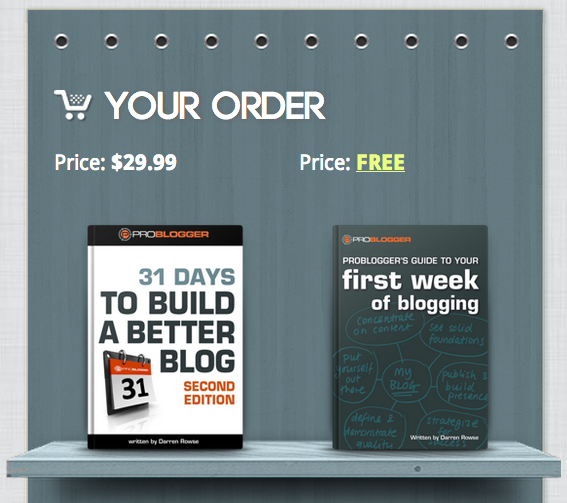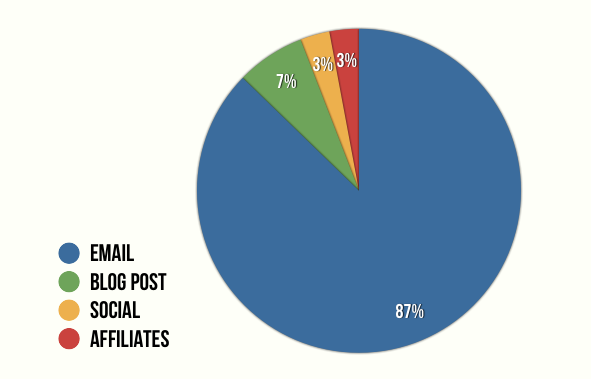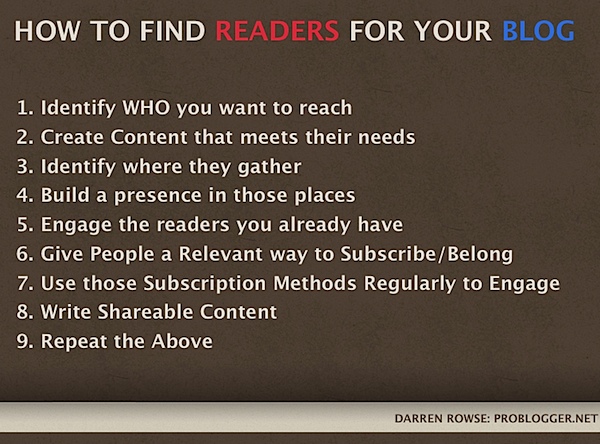This is a guest contribution from Eric Cummings who writes about art and philosophy for On Violence.
I’ve been writing this post for three years. What can I say? I'm lazy.
Or I should say, I used to be lazy.
That's not the case anymore. Four years ago, my brother and I started taking our writing career seriously. I now write. A lot. On my days off from work, I regularly put in over ten hour days, just writing, editing and re-writing. I've learned how to work, both smarter and harder. You can too.
(Finally, an admission: though I wrote down an outline for this post three years ago, I resuscitated this idea for today's post a few weeks ago.)
Tip 1: Forget the "To Do" List. Use Next Actions.
"To do" lists don't work because most people include "do's" like "write a novel", "pay bills" or "find web hosting". I know, because that's what I used to do.
Then I read David Allen's Getting Things Done. Instead of "to dos", Allen proposes "next actions". "Next actions" answer the question, "What do I need to do next?" Instead of "start a blog", your next action is "research domain registries", "brainstorm blog title ideas", and "list blog post ideas". This way you know what you need to do next.
For every blog post I write, I have a "NA" written at the top, stating the exact next action, like "research the topic" or "edit post" or "proofread". I can't do the entire concept justice in a blog post, but I'd recommend everyone read Getting Things Done. If you can't do that, when you're writing a "to do" list, ask yourself, what do I need to do next?
Tip 2: Figure Out Where You Lose Time
A number of years ago, my co-writer started listening to a podcast on business advice called Manager Tools. One episode changed my whole perspective on time, the appropriately titled "Time Management". Most importantly, I learned how to do a "time audit".
A time audit records everything you did on a given day. For one week, every ten or fifteen minutes, write down what you just did. At the end of the week, analyze it. Where do you waste time? What did you actually work on? What can you differently in the future?
What's our most valuable resource? Time. You may want to write, you just don't have the time. Then figure out where your time is going. Trust me, this analysis will blow your mind.
Tip 3: Figure out Your Golden Hours
A few years ago, Darren Rowse keyed me into his principle of "Golden Hours", the two or three hours of the day where everyone is the most productive. Some people work better in the morning. Others write better at night.
My golden hours occur between 9:00 to 12:00. Knowing this, when I have a day off, I make sure I'm writing during my golden hours. I do other tasks (chores, bills, answering comments) later in the day.
Figure out your golden hours and organize your day around them.
Tip 4: Break Up Your Writing…With "Productive Breaks".
Ever find yourself doing chores before writing? It's a common delay mechanism. Instead of delaying, solve this problem by planning out your day before you start writing.
If I know at the start of a writing day that I have chores to do, I plan on doing the chores in half hour chunks between bursts of writing. So I will write a guest post for an hour, then do dishes. Then I'll research blog posts, then sweep. Then I'll edit posts. Then go shopping.
Breaking up your writing day has two benefits.
First, you can clear your mind and recharge your batteries. Second, it frees your brain, which is still thinking about what your were writing about, to come up with new ideas. You can't write straight for hours on end. Some people probably can, but I can't. So I break up my day with "productive breaks".
Tip 5: Break Up Your Writing…By Writing About Different Things
My co-writer and I write a lot of different things. Blog posts, guest posts, essays, research papers, screenplays and more. We do this because we like writing about different things. But more importantly, it breaks up our days. I can get more writing in if I write in different mediums about different things. If I only wrote screenplays, I'd get bored. If I only wrote blog posts, I'd lose energy.
Vary up your writing and you'll work harder.
Tip 6: Monotask
Multi-tasking doesn't exist. Sorry, but your mind can't input multiple streams of information at the same time. You can't write an email and talk on the phone at the same time. It's impossible. And switching rapidly between tasks takes away your energy and focus.
So turn off your email, Twitter and chat programs. Don't answer your phone. Stay off the Internet, unless you're doing research on a current project.
Tip 7: Use Email in Bursts
As I just said, email can be a horrific time waster, especially if you leave it open all day.
Try this instead: Check your email in one hour blocks throughout the day; hopefully once in the morning, afternoon and at the end of the day. This applies to social media like Twitter, Facebook and chat programs as well. While that seems like an outrageously small amount of time, with practice you'll learn to get all your social media taken care of in these quick bursts.
Tip 8: Strengthen Your Will Power Muscle
New studies show that "will power" is a muscle that we can train like real muscles. I've learned this the hard way. When I first started writing five years ago, I could only work for about two hours at a time. Every year that time has increased by two hours.
Today, for instance, I've already been writing for about five hours, give or take some five minute breaks and a twenty minute walk. I'll probably write for another four hours, before I totally crash. I can only do this because I've been developing the writing muscle for a long time.
Another thought on will power: it will deplete itself. I lose energy at night, especially after I eat dinner. Understand this, and figure out when/why you crash and stop working.
Do something post dinner that requires less attention, like commenting or tweeting, than something you do during your golden hours.
Tip 9: Follow a Blogging Schedule!
My co-writer and I write our posts early, and schedule them ahead of time. When you're blogging, force yourself to follow a schedule. Know that you'll post two, three, or four times a week and stick to this schedule. It will make you a better writer and a better blogger.
There are no excuses for missing a week of posting. Write posts ahead of time, and create a folder of hold posts to use for emergencies. And write every week.
Eric Cummings writes about art and philosophy for On Violence, a blog on military and foreign affairs written by two brothers–one a soldier and the other a pacifist. Find him on Twitter, @onviolence.
Originally at: Blog Tips at ProBlogger

Don't Be Lazy: 9 Ways to Blog Smarter and Harder











 Let me show you a page on dPS, which is a page that generates a large number of subscribers. It is our
Let me show you a page on dPS, which is a page that generates a large number of subscribers. It is our  This week Google’s AdSense program celebrated its 10 year anniversary
This week Google’s AdSense program celebrated its 10 year anniversary 


.jpg)